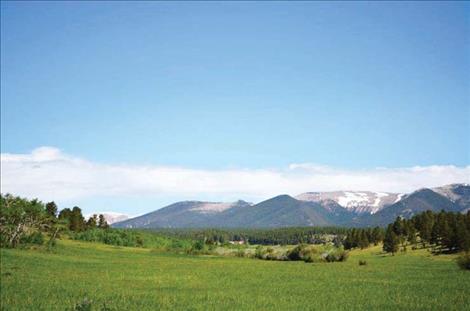Big Snowies project builds on conservation legacy
Hey savvy news reader! Thanks for choosing local.
You are now reading
1 of 3 free articles.
Very few Montana hunters probably know the names Bob Cooney, Arnie Foss or LeRoy Ellig.
But if they love the abundant wildlife that we enjoy today, love their sporting traditions and love the habitat that makes that all possible, they should.
That’s because these three visionaries – and many more both before and after their professional careers – saw the vital importance of protecting crucial habitat for big game and other wildlife. They knew that we needed winter range for our deer, elk and other big game species to survive. And they helped put in place the tools to ensure these essential conservation projects could get done.
Today Montana has one of the finest systems of state Wildlife Management Areas in the world. We look at the Wall Creek WMA in the Madison Valley, where Cooney counted around 250 elk and saw its importance as a historic elk winter ground. The state bought the first portion of Wall Creek in 1960. Today, standing in the same spot where Cooney had that vision, there are more than 2,600 elk on a winter day.
We can look at many others, too, including the Blackfoot-Clearwater, Beartooth and Dome Mountain WMAs. There are smaller wildlife management areas as well, but they’re just as important for wildlife species like bighorn sheep, antelope and non-game wildlife like songbirds and small mammals.
Now we can stand on the shoulders of these conservation giants and continue to build on this legacy. The Montana Department of Fish, Wildlife and Parks is working with two landowners on the south side of the Big Snowy Mountains in Golden Valley County to create a 14,000-acre WMA.
The proposed Big Snowy Mountains game range abuts more than 100,000 acres of public land with very little public access to it, including two wilderness study areas. It sits in the middle of one of Montana’s largest elk herds – one that’s nine times over the objective population in which state biologists are struggling to bring down because of limited public hunting access. It would also help support Montana’s $7.1 billion outdoor recreation economy, which draws visitors from all over the world.
And the project has broad support from not only the hunters of Montana – who would fund this project through their license dollars in the Habitat Montana program – but also local elected officials, conservation interests and more. And most of all, the landowners of the property including Shodair Children’s Hospital in Helena want to see these lands become public. Every time we make a land deal happen, that’s the first step – a willing landowner who comes to the state as a partner.
That’s also why it’s disturbing that some state legislators are proposing bills that would bar land purchases using Habitat Montana. Our state has long been at the forefront of wildlife conservation. We’ve learned that these foothill lands that are so essential for wildlife, pay huge benefits for generations to come. We need to maintain Habitat Montana because the program benefits all Montanans.
In a century, no one will know who we were either. But some Montana girl will shoot her first elk on the Big Snowy Mountains WMA. Some Montana family will enjoy a picnic there. And a couple will take a hike there. That’s our gift to future generations, one they’ll be incredibly thankful for.
Nick Gevock is the conservation director for the Montana Wildlife Federation.
















